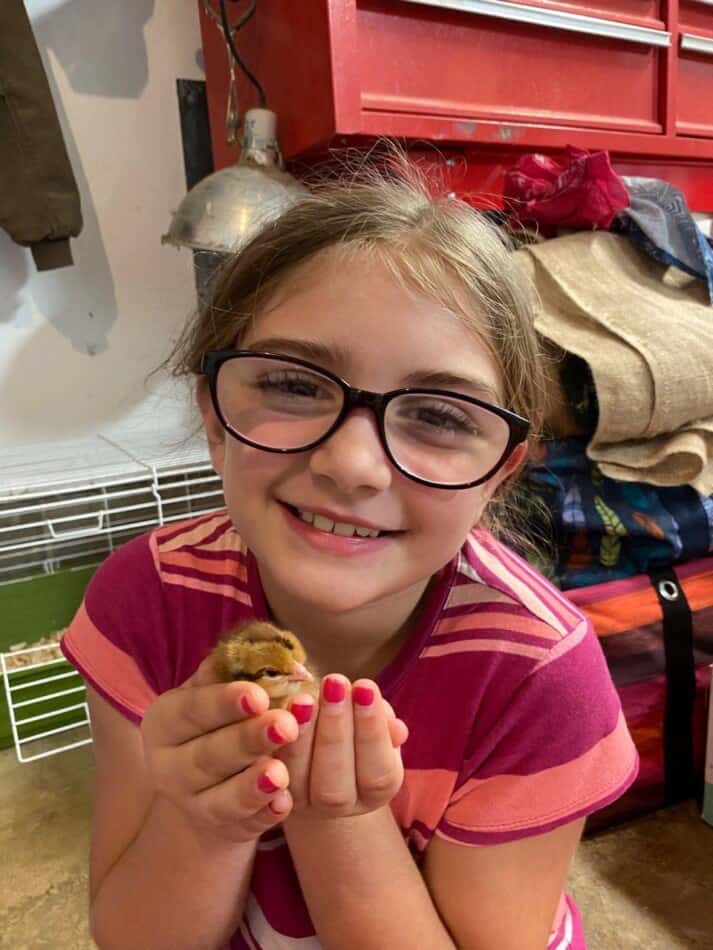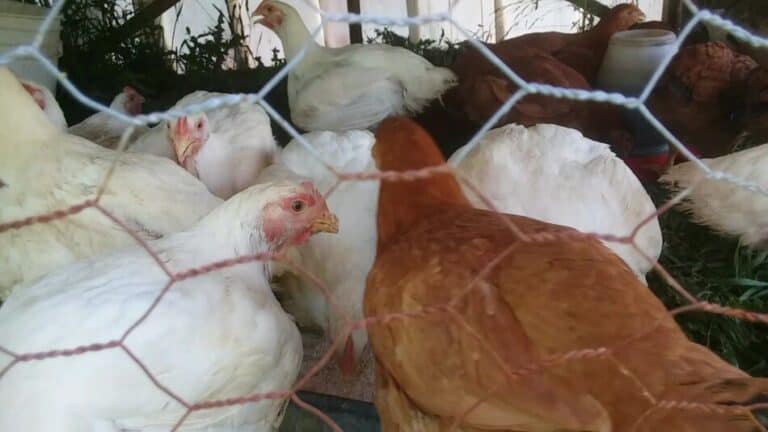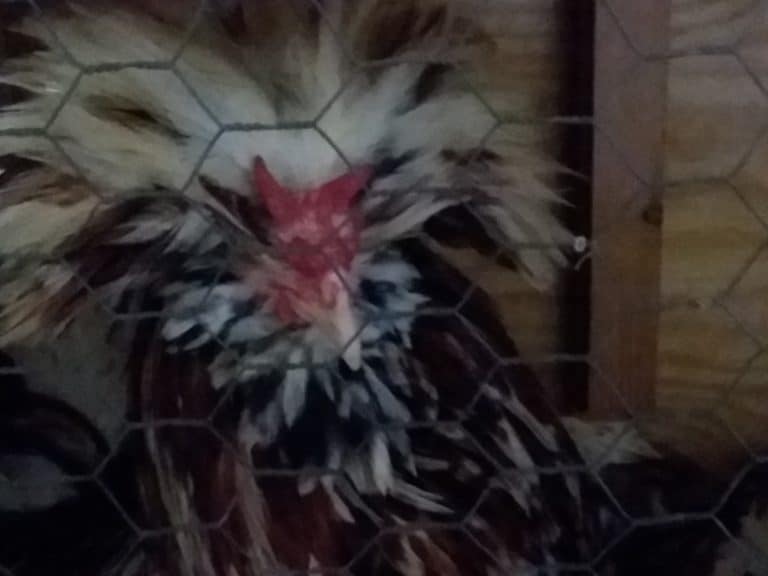Raising 25 Broilers: Beginner’s Guide To Area Needed And Options
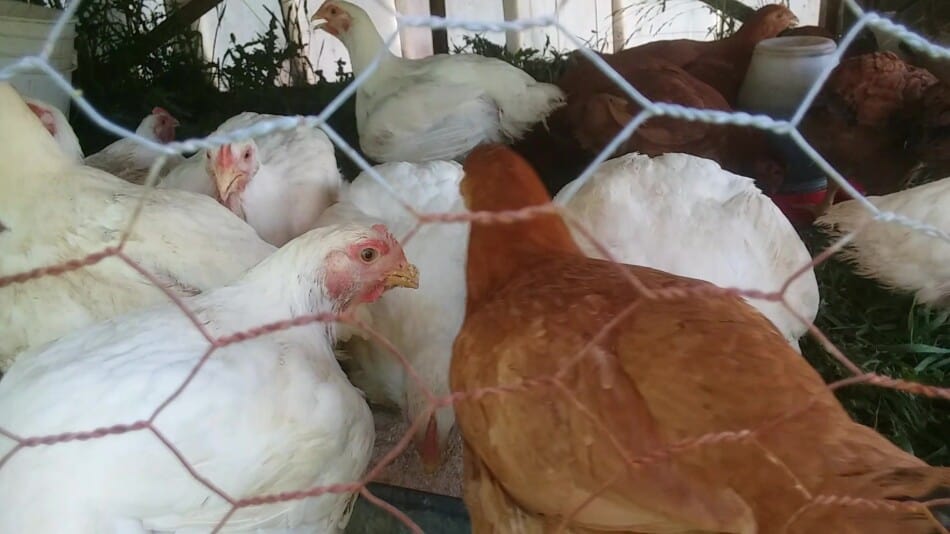
Raising your first batch of broilers? Super! Now you need to know how to house and care for your new chicks.
For a batch of 25 broilers, you need: 16″ diameter heat circle in a 4×4 brooder area for the chicks, followed by a 62.5 sq. ft. (or larger) grow out pen to be used when your broilers no longer need the brooder.
For a full cost breakdown of raising your own broilers, read my article Raising Your Own Meat Chickens Worth It?
Broilers need 2.5 sq. ft. each at maturity
| Broilers (batch of 25) | Heated Area (sq. inches) | Pen Area (sq. ft.) | Waterer (inches) | Feeder (inches) |
| Day old | 175 | 12.5 | 25 | 50 |
| Chicks- real life examples | 16″ heat circle | 4’x4′ brooder | 1-1 gallon waterer | 2-20″ troughs |
| Full size | none needed after 3 weeks | 62.5 | 2 gallons per day | 100 |
| Mature birds- real life examples | none needed | 8’x8′ area | 2-1 gallon waterers | 1-36″ trough |
Your broilers will need 2.5 sq. ft. of space each in their pen when they reach full size at 6-8 weeks. They can have more room than this, but not less!
The batch of 25 needs to have 62.5 sq. ft. which is a little less than an 8 x 8 area. For an easy comparison, 8 x 8 is the size of two full sheets of plywood.
Brooder space needed for broilers is .5 sq. ft. each
The brooder space needed per chick is .5 sq. ft. each, meaning your 25 chicks need 12.5 sq. ft. of floor space in their brooder.
Be sure to allow for enough heated space per chick, as well.
What do I mean by heated space? Space that is in the light circle from the heat lamp.
Since each chick needs to have 7 sq. inches of heated space available, you’ll need 175 sq. inches of heated space, which is a 16″ circle of heat, for the batch.
Here’s a great article from Missouri Extension, which includes the figures from the paragraph above (the heated space requirements per chick).
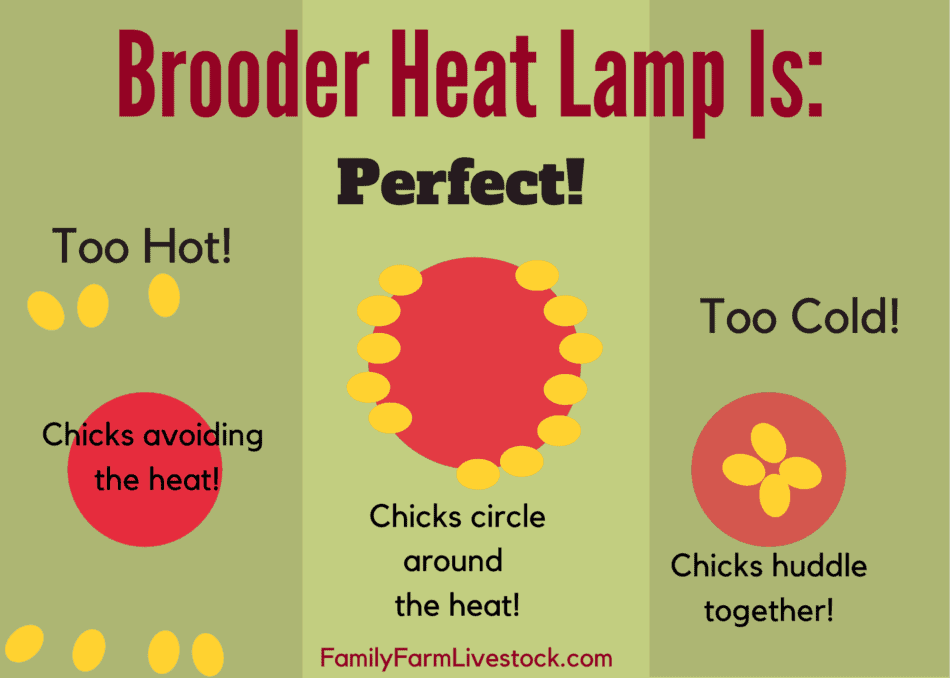
Watch the chicks to see if they have enough heated area
If you watch the chicks, you’ll be able to tell when they have enough heated area and when they don’t.
Chicks that have enough heated area are spread out in a circle, like a bull’s eye, resting in the heat.
There should be enough space that a few more chicks could fit in the heated area. If they are packed in tight, you need more heat lamps!
Chicks that need more heat are huddled close together in the center of the heat lamp heat circle. These chicks are telling you they are cold!
Worse yet, if the chicks are heaped on top of one another, this is bad news! If you see piling you must get another heat lamp in that brooder ASAP!
No joking here, piling is a serious problem. You’ll find suffocated chicks at the bottom of the pile!
The easy fix here is to have extra heated space, so the chicks have a few options of places to rest and stay warm.
Cornish Cross vs. Red Ranger goes over the differences between the two that I noticed when I raised a batch that had some of both.
Provide 4″ linear space at feeder per broiler
Your broilers will need to be able to get plenty of feed, especially as they get to the final part of their grow out period.
Full size broilers need 4 inches of feeder space per bird. Smaller chicks will do okay with 2 inches.
| Size of chicks | Feeder space (per chick) | Feeder space (per batch of 25) |
| New chicks | 2″ each | 50″ total |
| Small broilers | 2″ each | 50″ total |
| Larger broilers | 4″ each | 100″ total |
Unless the feeder is along a wall, be sure to count both sides of the feeder.
A 20″ trough feeder will feed 20 chicks or 10 larger broilers.
For 25 full size broilers you’ll need 3 of the 20″ feeders or a bulk feeder to keep up with their feed needs.
For us the bigger trough feeders like this one 36″ Deluxe Reel Chicken Feeder work better.
I know it isn’t quite 100 inches of space but the description says it works for up to 75 birds, so it will definitely handle your batch of 25.
I like the trough feeders better than a bulk feeder, because the feed bridges up in the bulk feeder where the chicks can’t get it.
Set the feeder at the level of their backs and keep it about half full. Tip top full will result in quite a bit of spilled feed.
Always have water available to your broilers
Your broilers need to have 1″ of drinking space per bird.
This means that your batch of 25 meat chickens will need at least a gallon size waterer to start out with and 2 gallon sized waterers as they get bigger.
I know 1″ of drinking space doesn’t sound like much, but the reason it works is that the birds share space at the waterer.
If you want your birds to have more waterer space, put another waterer in. Just make sure you have the minimum of 1″ space per bird to start with.
As long as your broilers have plenty of water left in the waterer each time you come back to feed them, they have enough water. If they are empty, they need another waterer or a bigger waterer.
For more details on these figures, read Virginia Cooperative Extension article Meat Bird Management.
Broilers need plenty of water to process their feed
A huge part of growing (and your broilers are growing machines!), is to have enough water for digestion to work well.
Limit the water your broilers have and you also limit the growing that they can do, not good.
Broilers can be kept outside on grass
The great news about broilers is that you can easily put them in a mobile coop, called a chicken tractor, an scoot them across your yard!
I love seeing our chicken tractor out in the yard, making it’s daily move across the grass.
The chickens seem happy to see the new grass and I’m happy to have the poo in place and working for me right away.
If you have your 25 broilers in an 8×8 pen and move it twice a day, they are getting twice the area they need, per day!
Not only are the broilers eating your grass, they are debugging your yard and fertilizing at the same time. Not a bad deal!
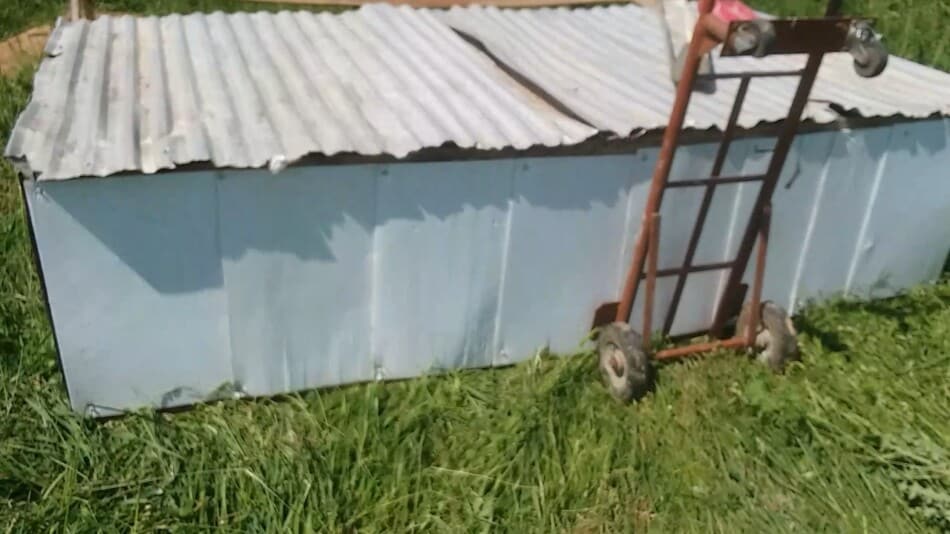
Make your chicken tractor 8 x 8
If you have researched around for plans to build a chicken tractor you’ll see most folks are putting more than 25 chickens in an 8×8 space. We don’t.
Let me tell you why we put a few less broilers per tractor than most:
- A pen built on 8 foot lengths of lumber is cheaper to build, simply because 8 foot is a standard length so it’s cheaper per foot
- An 8×8 pen is easy to move since it weighs less
- The broilers have more air circulation, this keeps them cooler on the hot days
- With a bigger chicken tractor, you can keep your birds longer, if you want a bigger chicken or you have a later processing date. If your birds are stocked at higher rates, for efficiency, you have near zero wiggle room. With a tighter spacing, the broilers will outgrow the space you have available to them if they are not processed before 8 weeks.
- 25 broilers in an 8×8 pen have enough grass to last them, for those hectic days when you end up missing a move
Broilers need to be 3 weeks old before going outside
There are a few things you should know before you put your broilers outside in a moveable pen (chicken tractor):
- Broilers need to be at least 3 weeks old to be in the tractor, before this they need to be in the brooder
- Uneven ground means predators can get in and broilers can get out
- Predators love broilers, this includes cats and dogs
- Other animals (chickens or goats) will jump in and steal feed from the broilers, have a lid on the tractor
You’ll need to evaluate the safety of your broilers for your situation. It could be that keeping broilers outside is not a good fit for your area.
If the problems are predators at night, you could lock the birds up in a shed overnight for more security.
We kept a batch in the garage and let them out in the morning, but would have to chase in the stragglers at dusk. (I still prefer the chicken tractor method but at the time we didn’t have one!)
If the problem is that anything left outside overnight gets eaten, keep your broilers inside! Supplement their diet with hand harvested greens and some nice alfalfa hay.
Broilers can stay inside during bad weather
One of the best things about broilers is that they are available year round from most hatcheries. Not many people raise broilers in the off season, but you sure could!
Plus, in the off season, it is much easier to get broilers ordered. Those spring hatches get sold out fast!
Around here, I wouldn’t want broilers in January or February, since it would be tough to keep the brooder warm enough, but other than that broilers would be fine the other 10 months of the year.
Actually, we prefer to raise broilers in the fall to early winter. The birds are getting to finishing size at the same time the weather is cooling down, perfect!
If you are wanting broilers in not so great weather, you can keep them inside for part or all of their lives.
As long as your birds are happy and healthy, there’s nothing wrong with keeping penned broilers, if that is what suits your area best.
I would find some hay or vegetable scraps to give the broilers some variety in their diets and to keep them engaged with their environment, but they do not have to be outside.
